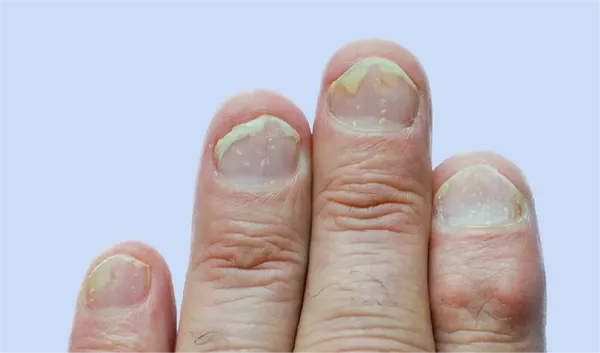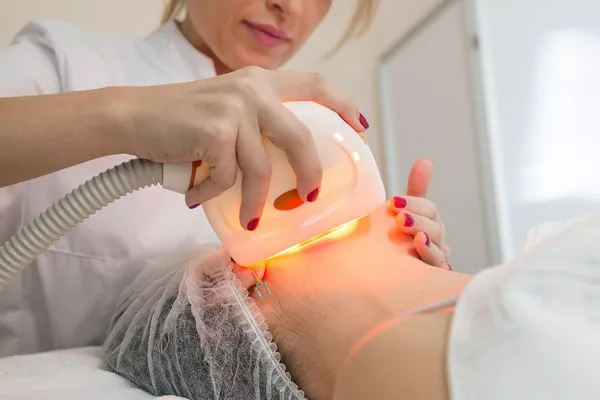Nail psoriasis is a common condition that affects a significant number of individuals with psoriasis. It can cause various changes in the appearance and structure of the nails, leading to discomfort and impacting quality of life. Understanding the nature, symptoms, and treatment options for nail psoriasis is crucial for managing the condition effectively.
Understanding Nail Psoriasis
Nail psoriasis is a manifestation of psoriasis, an autoimmune disorder characterized by rapid skin cell turnover, resulting in thick, scaly patches on the skin. When psoriasis affects the nails, it leads to a range of symptoms and complications that can be both physically and emotionally challenging for patients.
Symptoms and Physical Discomfort
Nail psoriasis can present with several distinct symptoms, including:
- Pitting: Small, depressions or pits appear on the nail surface, resembling the texture of a thimble.
- Onycholysis: Separation of the nail from the nail bed, starting at the tip and progressing towards the cuticle, creating a gap under the nail.
- Discoloration: Nails may turn yellow, brown, or green, and may also exhibit red or white spots.
- Subungual Hyperkeratosis: Thickening of the skin under the nail, causing the nail to lift.
- Crumbly Nails: Nails become brittle and may crumble or break easily.
- Beau’s Lines: Indentations that run horizontally across the nails.
These symptoms can lead to significant physical discomfort. The pain associated with nail psoriasis often stems from several factors, including:
- Inflammation: The inflammatory process in psoriasis can affect the nail matrix and nail bed, causing pain.
- Nail Changes: Thickening, lifting, and separation of the nail can cause tenderness and sensitivity.
- Secondary Infections: The gaps created by onycholysis can become breeding grounds for fungal or bacterial infections, leading to additional pain and discomfort.
Psychological Impact and Pain Perception
Beyond physical pain, nail psoriasis can have a profound psychological impact. The appearance of affected nails can lead to self-consciousness, social anxiety, and even depression. The chronic nature of the condition and the recurring symptoms can exacerbate feelings of frustration and helplessness.
Diagnosis and Assessment
Diagnosing nail psoriasis typically involves a clinical examination by a dermatologist. In some cases, a biopsy may be necessary to rule out other conditions such as fungal infections or other types of nail dystrophy. The severity of nail psoriasis can be assessed using various scoring systems, such as the Nail Psoriasis Severity Index (NAPSI), which evaluates the extent of nail matrix and nail bed involvement.
Treatment Options
Treating nail psoriasis can be challenging due to the slow growth rate of nails and the difficulty of delivering medication to the nail bed. However, several treatment options are available:
Topical Treatments
Topical treatments are often the first line of defense and may include:
- Corticosteroids: These anti-inflammatory medications can be applied directly to the affected nails to reduce inflammation and slow the progression of symptoms.
- Vitamin D Analogues: Topical applications such as calcipotriol can help regulate skin cell growth and reduce psoriatic activity.
- Tazarotene: A topical retinoid that can help normalize skin cell production and reduce inflammation.
- Calcineurin Inhibitors: These can be used off-label to reduce inflammation and improve nail appearance.
Systemic Treatments
For more severe cases of nail psoriasis or when topical treatments fail to provide relief, systemic treatments may be considered:
- Methotrexate: An immunosuppressant that can reduce the overall activity of psoriasis.
- Cyclosporine: Another immunosuppressant that can be effective in severe cases.
- Biologics: These are targeted therapies that block specific pathways in the immune system responsible for psoriasis. Examples include adalimumab, etanercept, and infliximab.
- Oral Retinoids: Acitretin is an oral retinoid that can help reduce the symptoms of nail psoriasis.
Phototherapy
Phototherapy, or light therapy, involves exposing the skin and nails to ultraviolet light under medical supervision. It can help slow down the growth of affected skin cells and improve symptoms. Laser therapy, specifically pulsed dye laser (PDL), has also shown promise in treating nail psoriasis.
SEE ALSO: Does Psoriasis Go Away in the Summer?
Complementary and Alternative Treatments
In addition to conventional treatments, some patients may explore complementary and alternative therapies to manage their symptoms. These can include:
- Diet and Nutrition: Maintaining a balanced diet and avoiding triggers such as gluten and alcohol may help reduce symptoms in some individuals.
- Supplements: Omega-3 fatty acids, vitamin D, and biotin supplements may support nail health and reduce inflammation.
- Herbal Remedies: Some herbal remedies, such as aloe vera, turmeric, and tea tree oil, have anti-inflammatory properties and may provide relief.
- Stress Management: Techniques such as mindfulness, meditation, and yoga can help manage the psychological impact of nail psoriasis and reduce stress-related flare-ups.
Self-Care and Preventive Measures
Self-care plays a crucial role in managing nail psoriasis. Patients can adopt several measures to minimize discomfort and prevent exacerbation of symptoms:
- Nail Care: Keeping nails trimmed and clean can prevent onycholysis and reduce the risk of infections. Using gentle nail care tools and avoiding harsh manicures can also help.
- Moisturization: Regularly moisturizing nails and cuticles can keep them supple and reduce the risk of cracking and splitting.
- Protective Measures: Wearing gloves while performing household chores or gardening can protect nails from trauma and exposure to irritants.
- Avoiding Triggers: Identifying and avoiding personal triggers such as stress, smoking, and certain foods can help manage symptoms.
Living with Nail Psoriasis
Living with nail psoriasis requires a multifaceted approach that encompasses medical treatment, self-care, and psychological support. Patients should work closely with their healthcare providers to develop a comprehensive management plan tailored to their specific needs. Regular follow-ups and monitoring are essential to assess the effectiveness of treatments and make necessary adjustments.
Conclusion
Nail psoriasis can indeed be painful and significantly impact an individual’s quality of life. The physical discomfort, coupled with the psychological burden, underscores the importance of effective management strategies. While there is no cure for psoriasis, a combination of medical treatments, self-care practices, and lifestyle modifications can help alleviate symptoms and improve the overall well-being of those affected by nail psoriasis. By staying informed and proactive, patients can navigate the challenges of this condition and achieve better control over their symptoms.
Related Topics:

























